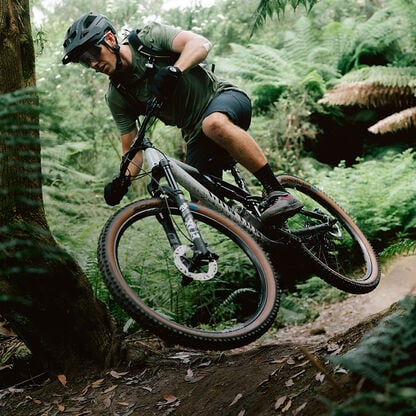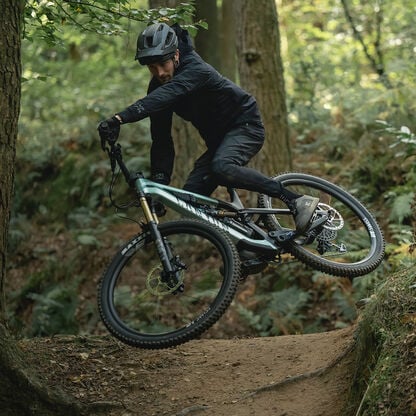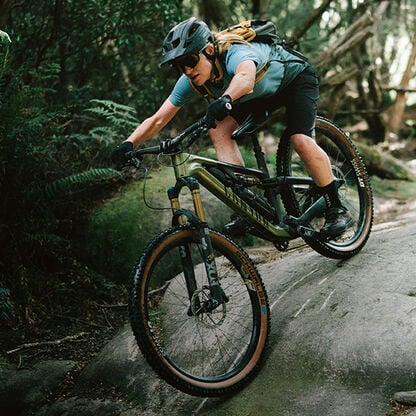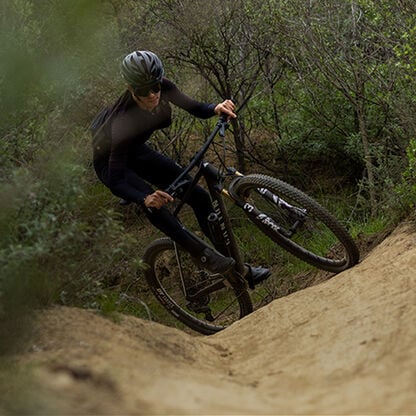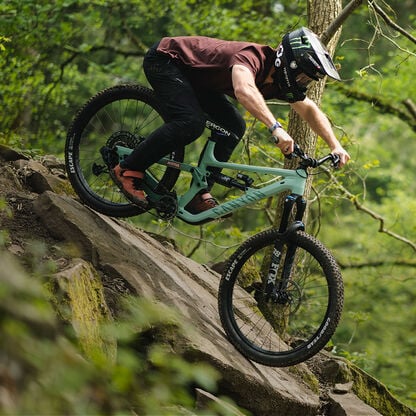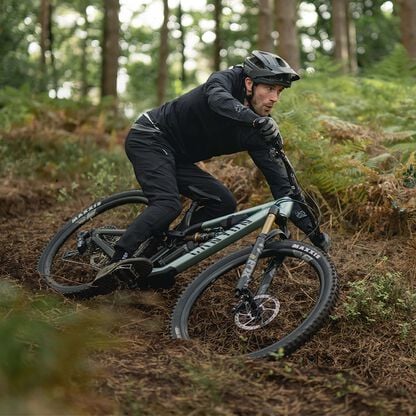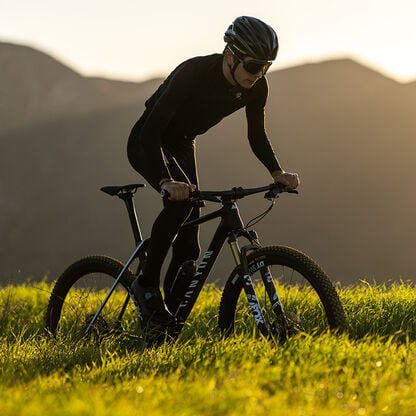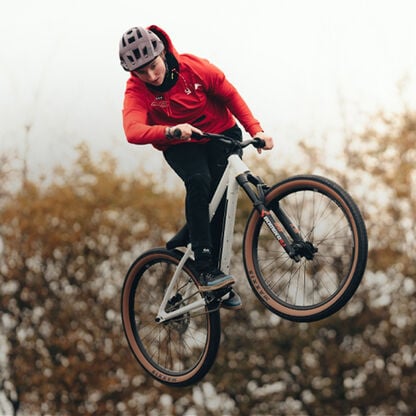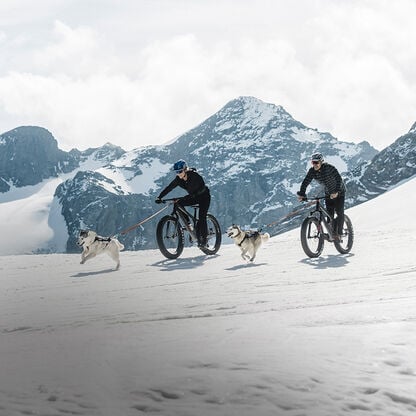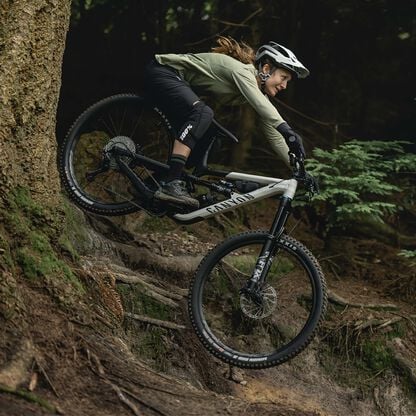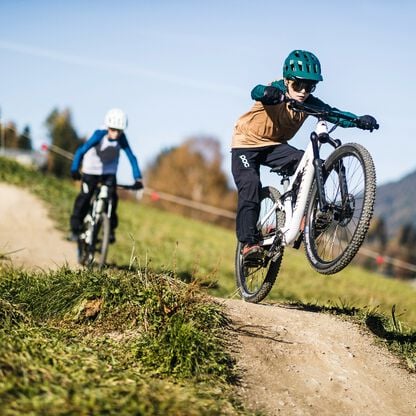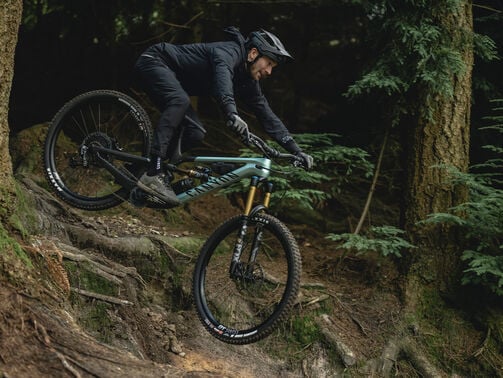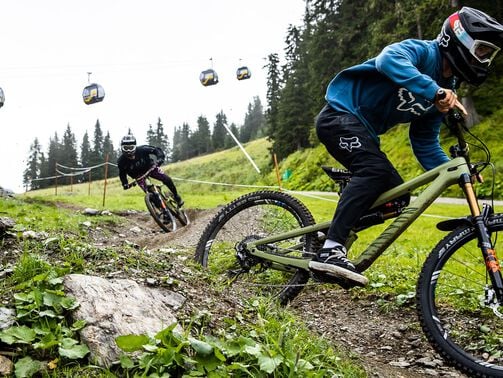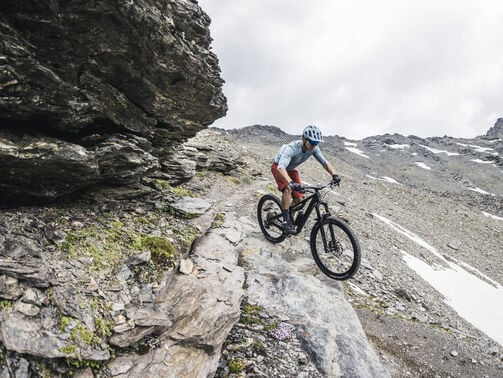27.5 vs 29-inch mountain bike: Which wheel size should you choose?
Not sure whether you need 29 or 27.5-inch wheels? Dive into the great mountain bike wheelsize debate.

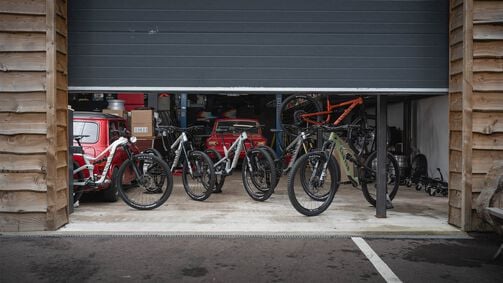
“Pick a wheelsize and be a @#$% about it.” That was the law of the internet comment sections at the height of the Great Mountain Bike Wheelsize Debate. For some, the larger 29-inch wheel was undeniably better, offering increased rollover, traction and momentum. For others, the supremacy of smaller wheels in tighter technical sections was equally undeniable, and you can imagine how it all devolved into an ugly shouting match.
Wheelsize is one of the dominant parts of your experience on a mountain bike. Maybe not as crucial as mountain bike geometry, but it is close. Overall, a 29-inch wheel will cover ground more effectively, roll over larger obstacles, and offer more grip than a smaller wheel. Those are the upsides. Now for the downsides... These same larger 29-inch wheels come with the downside that they are harder to get up to speed and more difficult to change direction. Which one is right for you will come down to many factors, including your height, experience and riding preferences. This short guide will help you walk you through the factors to help you decide which wheelsize is right for you.
Contents
27.5 vs 29: A short history of mountain bike wheelsizes
Twenty years ago, nobody was talking about wheelsize because it was simple: nearly all mountain bikes had 26-inch wheels. Quietly, a few small frame builders started experimenting with something taboo, a new, larger, 29-inch wheel. At first, these big-wheeled monstrosities were derided as ugly, ungainly and unable to navigate technical terrain. Those criticisms weren’t unfounded for many of the early bikes, but, over time, frame builders learned how to make sharp-handling, aggressive 29-inch wheeled bikes. Today, 29-inch wheels dominate mountain biking, holding wins in every major category of mountain bike racing from cross-country to downhill.
As 29-inch wheels rose to prominence, some people felt they were going too far. They saw the benefits of a larger wheel, but also saw drawbacks in the form of less nimble, “playful” bike handling. To try and bridge the gap from 26-inch wheels, 27.5-inch wheels were introduced and, for a couple of years, became the dominant mountain bike wheelsize. As 29-inch mountain bikes continue to get better, the downsides of the bigger wheelsize were fewer while the benefits were accentuated, and the pendulum swung decisively towards 29-inch wheels.
Today, 27.5-inch wheels are most popular when used as a rear tyre, in combination with a larger 29-inch front wheel - what mountain bikers refer to as a “mullet” setup. They are also a useful tool to allow smaller riders to have a more comfortable experience on their bikes. Finally, some people simply like the way 27.5 wheels feel on the trail.
27.5 vs 29, the physics
If you are trying to understand the differences between mountain bike wheel sizes, a good place to start is with the physics of what is happening. There are two main factors you need to consider - weight and diameter.
Let's start with the simplest factor, weight. Assuming a 29 and 27.5-inch wheel are built with the same exact materials, a larger wheel will weigh a little more than a smaller one. This added weight has all kinds of implications. If you are accelerating, a heavier wheel will be slightly harder to get up to speed. Similarly, when you are turning, a heavier wheel will be slightly harder to change direction.
This extra resistance in changing direction has both a positive and a negative side. If you are looking to make quick, sharp turns, it’s harder work to change direction with a bigger heavier wheel. Conversely, this also means that if you are monster trucking through a rocky section of the trail, your large 29-inch wheels are less likely to be deflected off line. When you are rolling, this added weight means more momentum, which will make covering distance more efficient. This means that a smaller wheel will accelerate and turn more quickly, but will not carry as much momentum and will be more likely to be knocked off course in technical terrain.
When we get to talking about size there are two parts to this. First is the difference the size of the wheel makes out on the trail. A larger diameter wheel will have what is called a larger contact patch - a larger tyre touches the ground with a larger area than a smaller tyre would. More contact between the tire and the ground means more traction available to you. Secondly, the larger diameter wheel will roll over larger obstacles more easily, meaning you will lose less speed on rough sections of trail.
Finally, there is the question of how a larger wheel interacts with the rider him or herself. Smaller riders (those below maybe 1m70), may find that 29-inch wheels have a way of contacting their butts when the rider scoots rearward, off the saddle, on steep, technical descents. In those cases, a smaller rear wheel can benefit them by giving them a bit more, er, breathing room between the rear tire and parts of your body you never wanted to contact a tire. Which leads to our next topic, “mullet” wheel sizing.
What is a mullet setup?
The term mullet comes from an old adage about the popular 1980s haircut: “business in the front, party in the back.” By this, mountain bikers mean running a 29-inch wheel at the front and a 27.5-inch wheel in the rear, to get the best of both worlds. The larger wheel at the front gives you the extra rollover and traction, while the smaller wheel at the back is easier to handle for the technical sections. This mixed wheel tire configuration is most popular for genres of mountain biking where technical bike handling is key, like for downhill racing. By contrast, when covering both climbs and descents at high speed is more important, full 29-inch wheels are usually faster, as in cross-country racing (discover Canyon mullet mountain bikes here).
27.5 vs 29er: which wheelsize for which style of riding?
Every time we create a new bike, we imagine a rider and then try to build their perfect bike. Choosing the wheelsize we think will work best for the specific demands of their ride style is always part of that process.
27.5 vs 29 for beginners
If you are new to mountain biking, we think the most important thing is to get a bike that fits you really well. This is why, for our Grand Canyon and Neuron ranges, we offer the smallest sizes with 27.5 wheels front and rear. Both of these models are designed to introduce riders to performance mountain biking with bikes that are easy to ride and live with, right out of the box. Consequently, when it came to choosing wheels for Grand Canyon and Neuron models, we focused on how wheelsizing affects bike fit. This means that riders seeking Extra Small or Double Extra Small Grand Canyon and Neuron models have their choice of models sporting 27.5 wheels (front and rear) which mesh well with these smaller frame sizes.
For more details on choosing the right fit, check out our MTB sizing guide, and don’t miss our guide on how to choose the best entry-level MTB to get started with confidence.

27.5 vs 29 for trail riding
The truth is that there is no single “best” wheelsize for trail riding. It comes down to your own ride style and the particular trails you ride most. Trail riding is a very personal affair with no clock or other objective way to decide which setup is better, which means that the only thing that matters is what you enjoy more. This is why we made sure that our award-winning Spectral platform can wear both full 29er and Mullet wheel combinations. For riders who want to cover ground fast, a full 29 setup might be perfect, while if your idea of fun is shredding corners, maybe a 27.5 rear wheel will be what you need. The only exception to this is the XS size, which (to optimize easy sizing) can only accept the 27.5 rear wheel.
27.5 vs 29 for enduro racing
Mullet vs 29er is a difficult question to answer for enduro, with different riders preferring different setups. Working closely with our elite enduro athletes, we settled on full 29 for our Strive platform. While this may seem counterintuitive, because enduro is only raced on the timed downhill sections, you need to remember that a real enduro race is about a big day out on the bike. On that kind of day, our riders told us that having the extra efficiency of the bigger wheels to cover the whole course quickly was more important than the seconds shaved on the stage with a 27.5 rear wheel.
27.5 vs 29 for downhill
When how your bike works going down the hill is the only thing that matters, we think that the advantages of a mullet setup are undeniable. The smaller rear wheel opens up more possibilities for bike handling, and the feedback from our Canyon CLLCTV DH team is clear, which is why both the Sender and the Torque are offered with mullet setups.
27.5 vs 29 for cross-country
The wheelsize choice for cross-country racing is equally clear – full 29 is the only way to go. While we know that smaller riders will find our cross-country bikes a little harder to ride because of their full 29 wheels, we also know that they will appreciate the extra speed once the flag drops for racing. Cross-country races are won by riders who can deliver consistent power and speed over the race distance. Consequently, we saw that the rolling speed disadvantages of a 27.5 wheel were going to be too great a competitive disadvantage for cross-country racing. This is why both our Exceed and Lux XC race bikes are only offered with 29-inch wheels.

The pros and cons of 27.5 vs 29er mountain bike
If you are finding this all a lot of information to digest, we find it usually helps to break decisions down into simple pros and cons lists.
Pros and cons of 29-inch wheels
| Pros | Cons |
|---|---|
| Rollover capability: Smoother ride over obstacles and rough terrain | Maneuverability: Less nimble in tight, technical terrain |
| Efficiency: More efficient on long rides and climbs | Acceleration: Slower to accelerate from a standstill |
| Traction: Larger contact patch with the ground for better grip | Weight: Typically slightly heavier than identical wheels in a smaller size |
| Stability: More stable at high speeds and in rough terrain | Fit: Can be challenging to fit properly for shorter riders |
Pros and cons of 27.5-inch wheels
| Pros | Cons |
|---|---|
| Agility: More responsive handling and easier to maneuver in tight spaces | Rollover ability: More likely to get hung up on obstacles |
| Acceleration: Quicker acceleration from standstill and out of corners | Momentum: Doesn't maintain speed as well over rough terrain |
| Weight: Typically lighter wheels | Stability: Less stable at high speeds |
| Fit: Better proportional fit for shorter riders | Traction: Smaller contact patch with the ground |
| Industry support: Decreasing options as manufacturers focus more on 29" wheels |
The final point for 27.5-inch wheels is one worth considering deeply. While we try to cater to as many preferences as possible, we have to focus on the bikes our customers want, and this means we are moving, with the rest of the cycle industry, away from full 27.5-inch bikes for most people. Finding entry-level tyres and wheels for 27.5 will not be difficult in the years to come, but it will be more complicated in the higher, more performance-focused end of the market. Today, if you want the best front tyre possible, there are already fewer options for 27.5-inch wheels, and this will continue to grow more difficult as the years go by.
Making the final decision, your next step
While the Great Mountain Bike Wheelsize Debate may seem confusing to many, we hope that our range of bikes will make it easy for you to find the right one for you. By focusing on the rider and riding experience, rather than focusing on a wheelsize, we are confident you will be able to find a bike that feels great for you and where you ride.
Still not sure which MTB is right for you? Take a look at our MTB buying guide to walk you through our mountain bike ranges in detail, helping you better understand each model. Our bike comparison tool can help you dive deeper into each range to understand the differences between individual models. If you would rather get off the internet to look at some bikes and talk to people, our Experience Centres have friendly teams who will be more than happy to show you the ranges and models and set up a test ride for you.
And that’s a wrap - choose your wheels, hit the trail, and make every ride unforgettable!
Discover our Mountain Bikes
Did this article help?
Thank you for your feedback
-
 About the author
About the authorMatt Wragg
Get to know Matt Wragg, the freelance photographer, writer, and self-proclaimed bicycle-breaker based in Nice, France. Despite unsuccessful attempts at XC, trials, 4X, and DH racing, Matt's passion for mountain biking never waned. After a stint in communications consulting, he decided to pursue his love for cycling and moved to New Zealand. Since then, he has traveled the world, chasing trails and building a successful career as a cycling photographer and writer. In 2021, he was diagnosed as autistic and has been coming to terms with it. His bike cellar is a true testament to his love for cycling, housing bikes that range from freeride to cargo.
